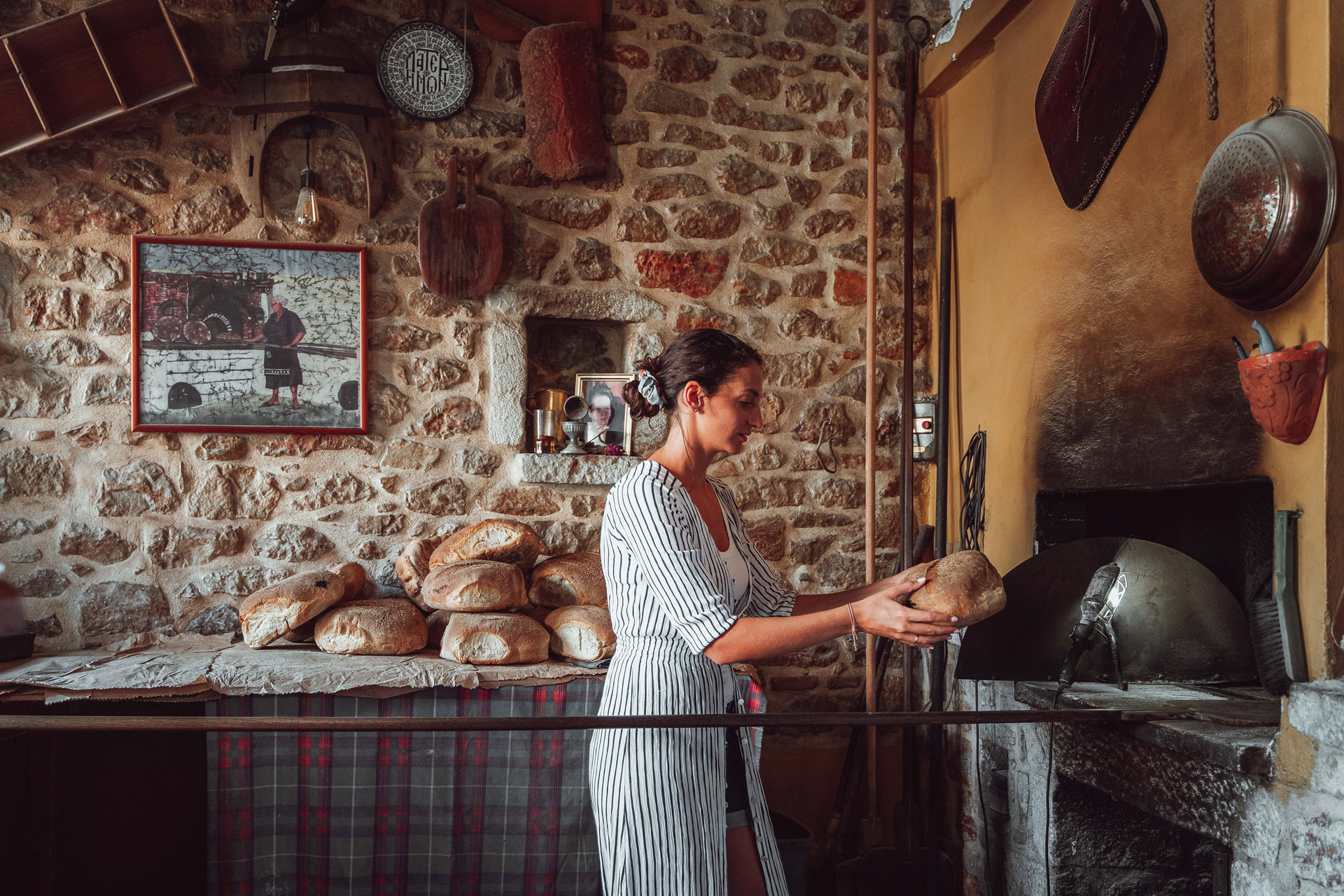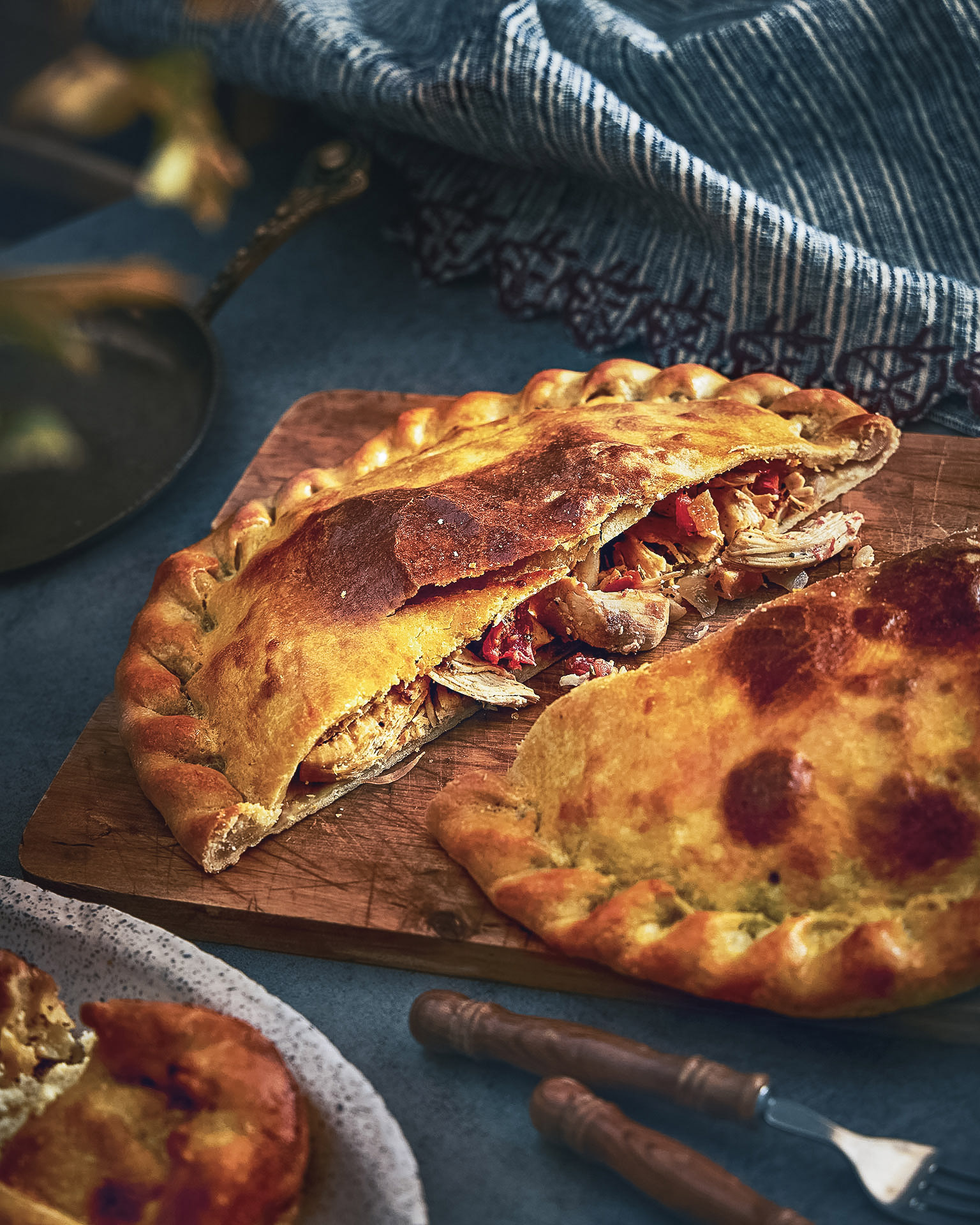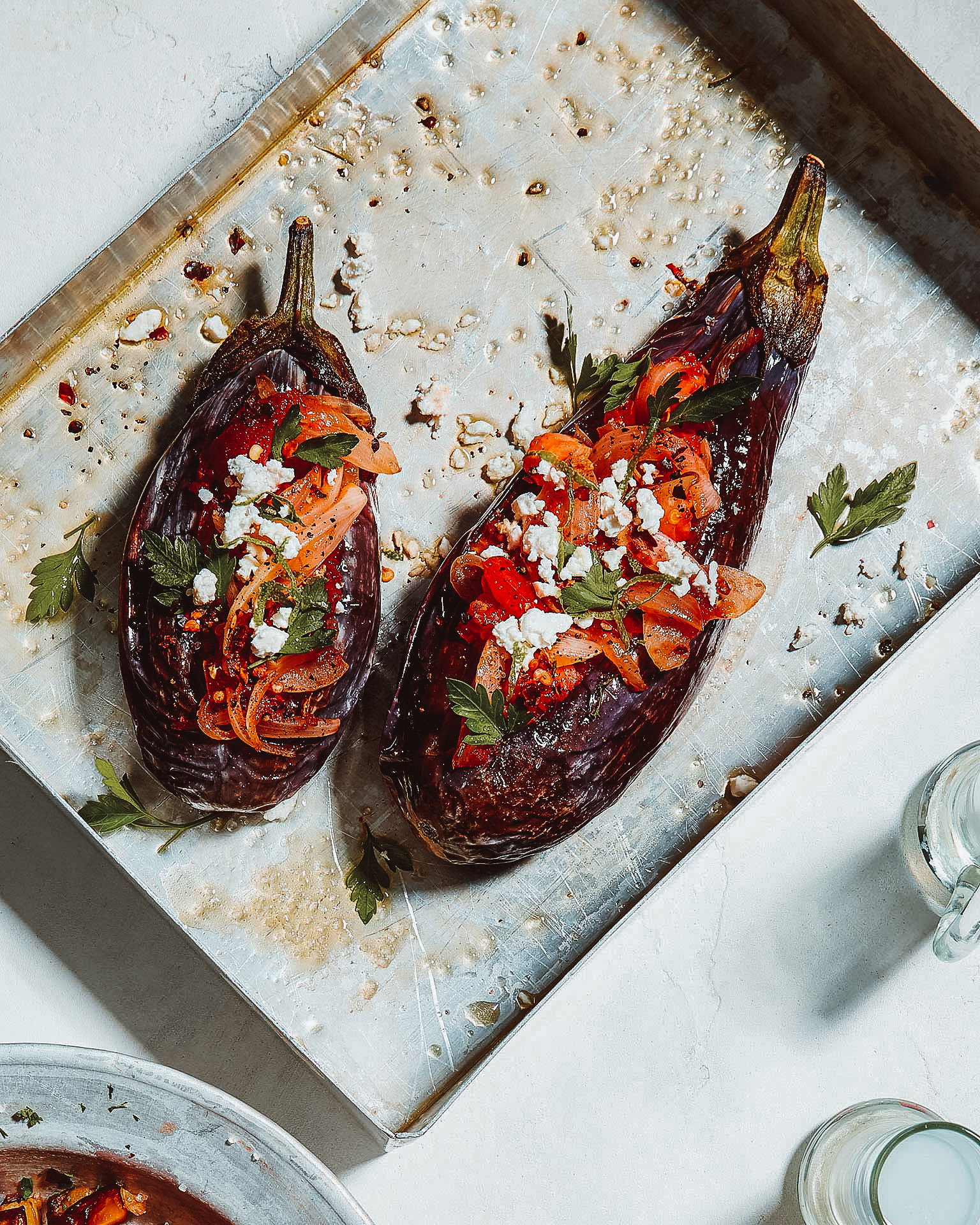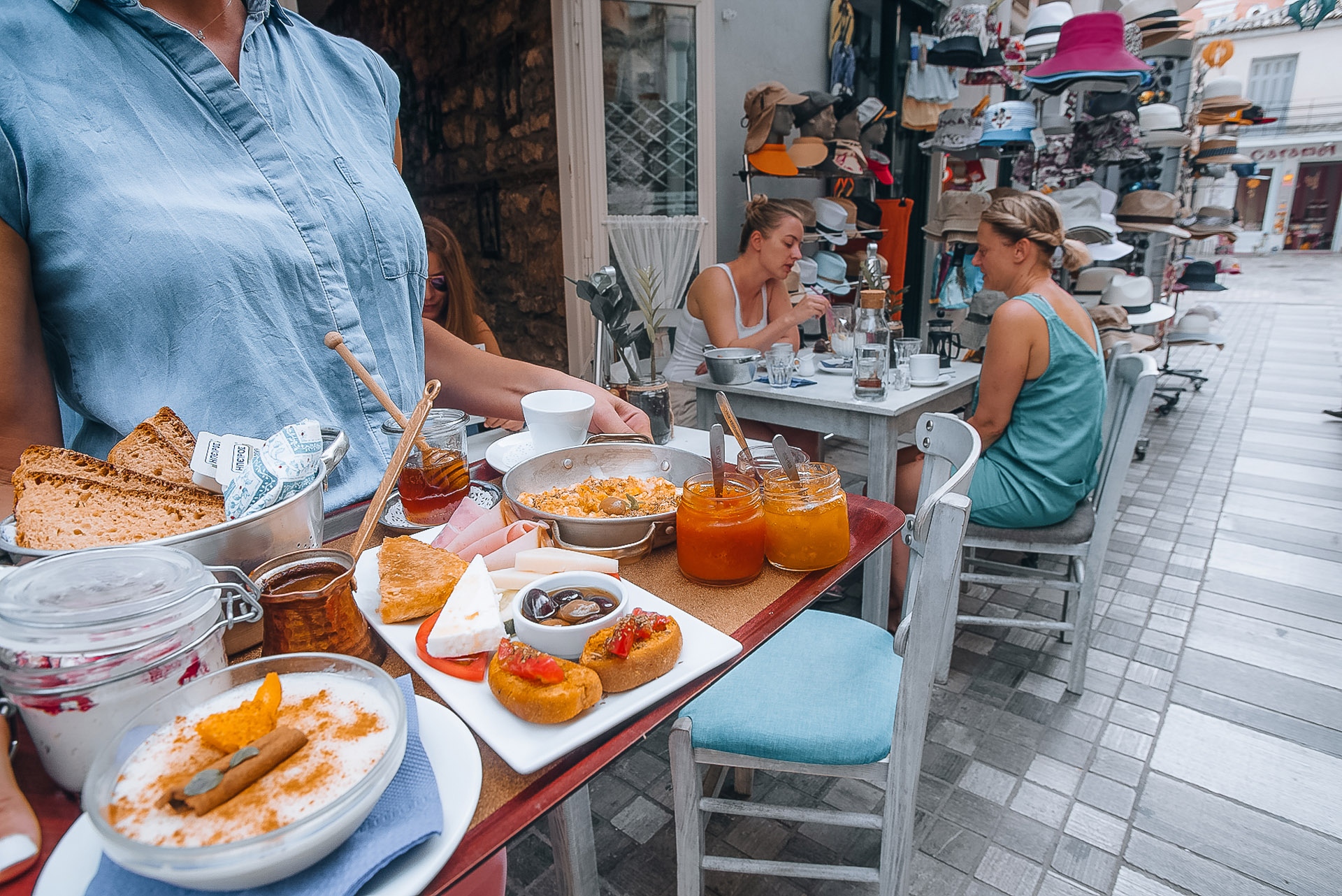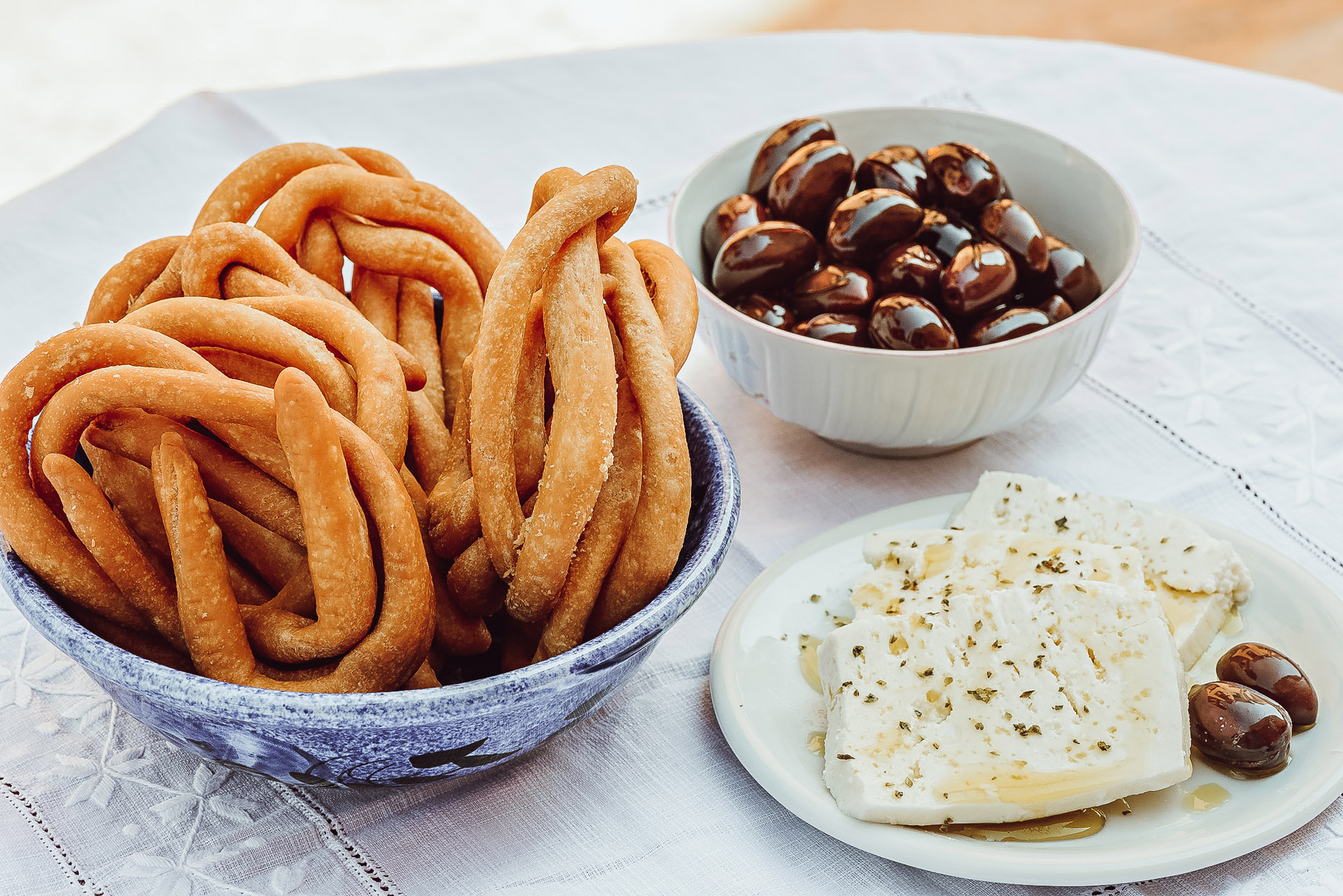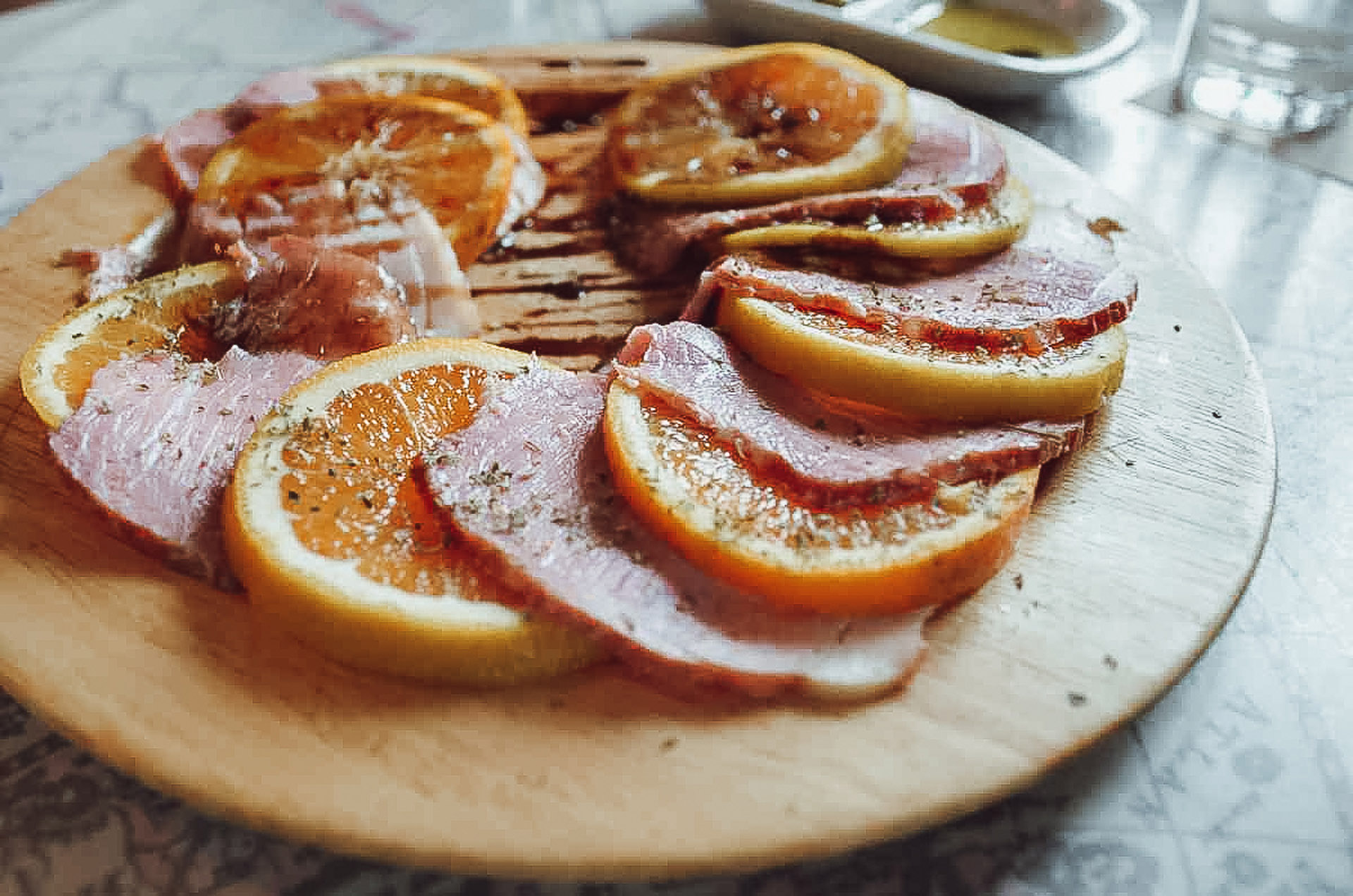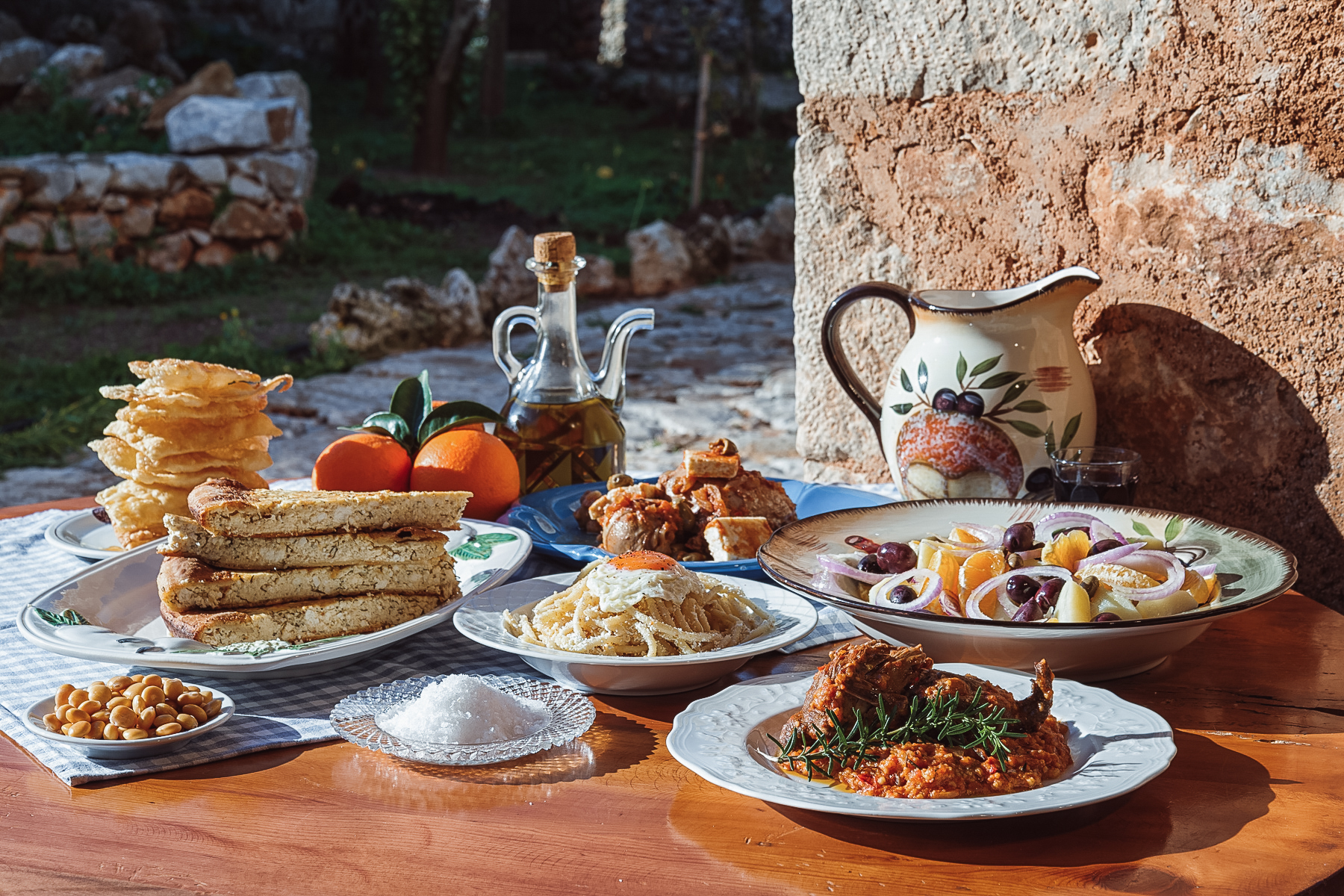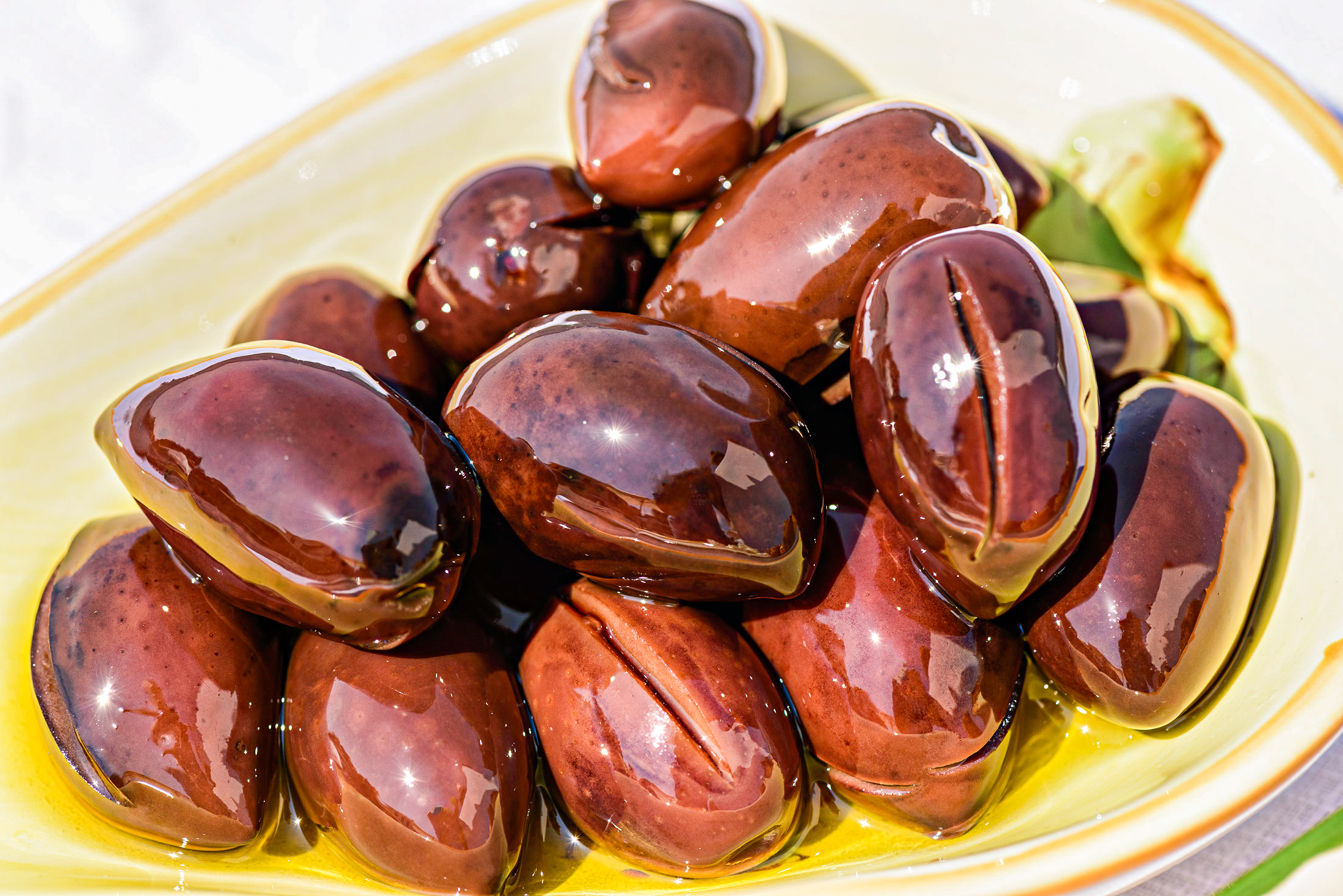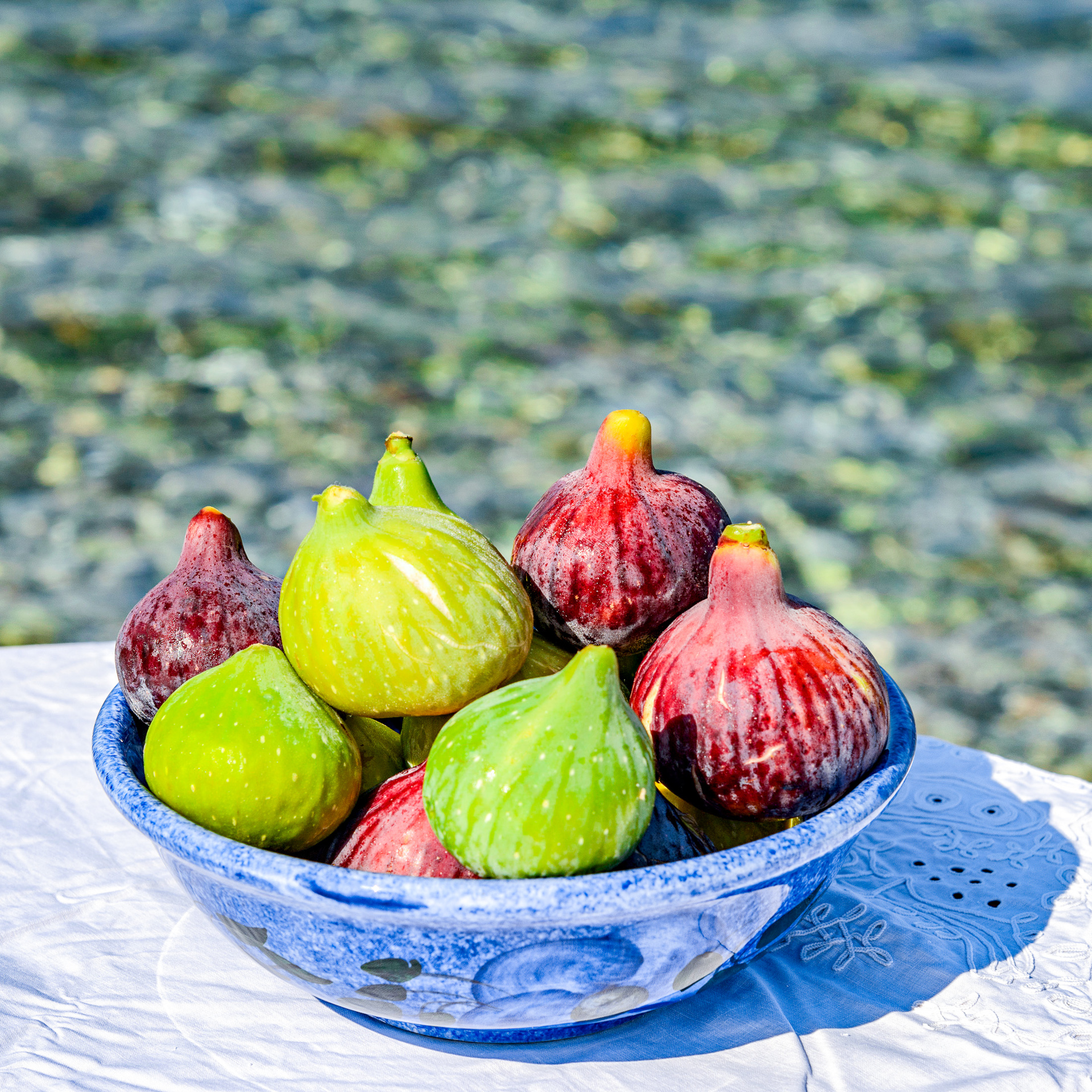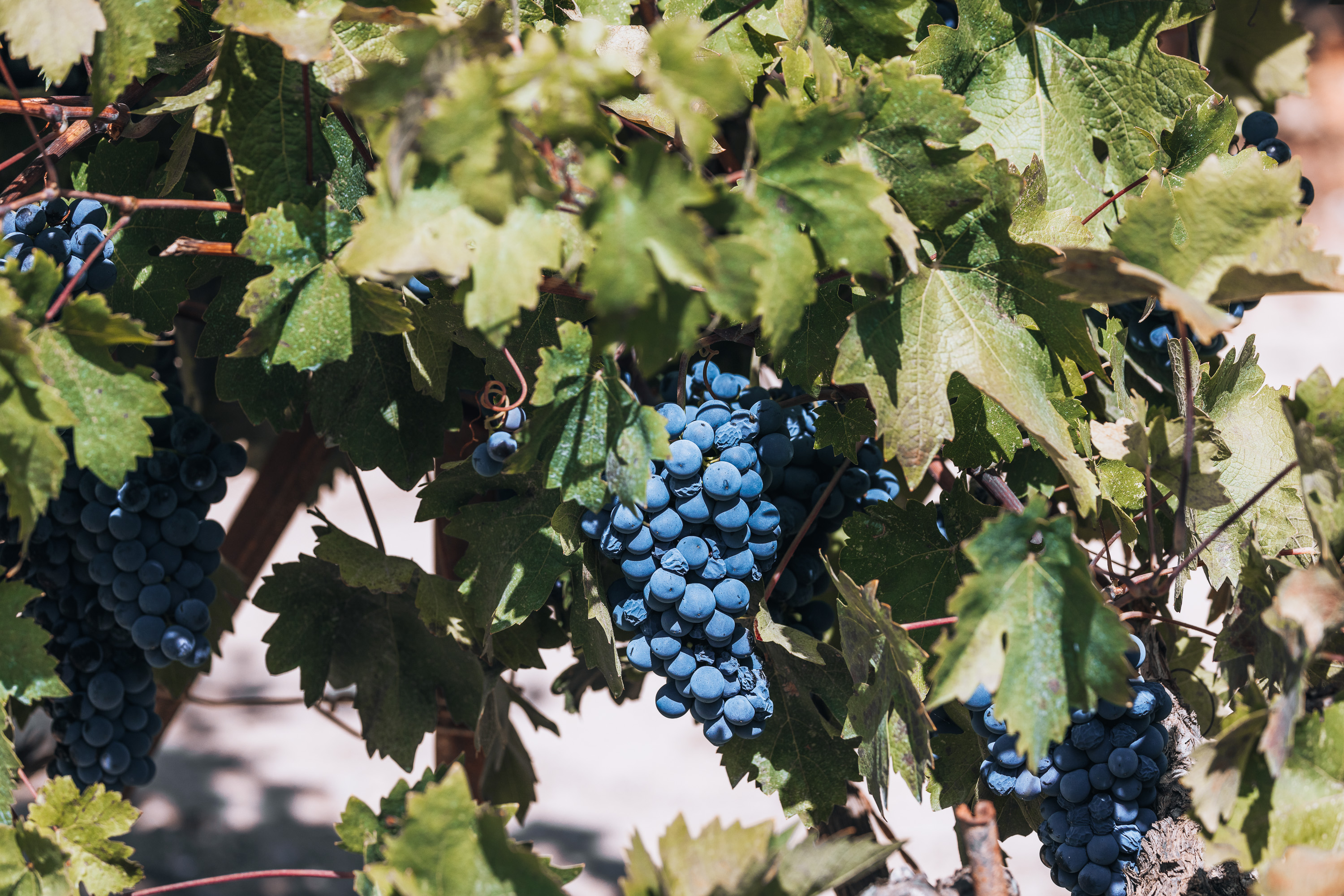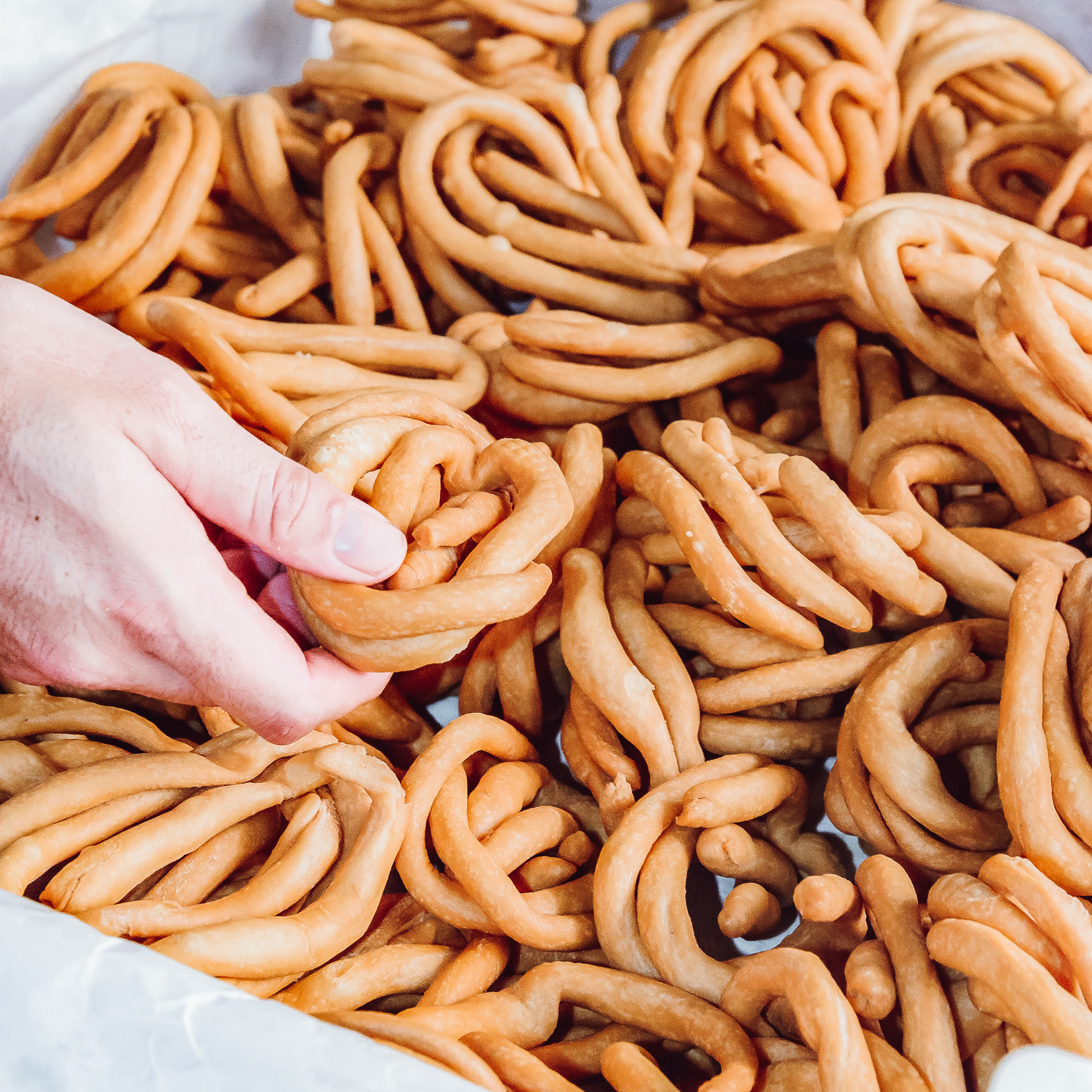Traditional recipes from Peloponnese
Traditional cuisine and recipes from the Peloponnese
Greece is rightly famous for its food, and sometimes it seems as if the whole world is trying to follow a Mediterranean diet, but what many people don’t realise is that some of the best traditional foods and recipes are to be found in the Peloponnese. Everywhere you go you will come across these delicious dishes that have been passed down through the generations, and whether you’re in a taverna, a restaurant or in someone’s home, no table is complete without traditional Peloponnese cooking. Sometimes you’ll find the “authentic” version which has been cooked in almost exactly the same way for hundreds of years, and other times you will find that chefs have been inspired by traditional cooking and gone on to create something a little bit different.
As with all Greek cooking, the secret is in the fresh local produce and raw ingredients. And since the Peloponnese produces its own excellent virgin olive oil, olives, dairy, meat, fish, vegetables, fruits, herbs, honey and much, much more, there is plenty of variety and outstanding flavours to enjoy.
Many products from the Peloponnese are P.D.O. (Protected Destination of Origin) or P.G.I. (Protected Geographical Indication) certified and therefore exclusively made in local areas. But that’s a whole other subject, and we’ll talk more about it another time...
So let’s start by getting to know some traditional winter recipes, and also having a peek at other dishes served all year round.
Photos: Discover Greece
Traditional mountain meat dishes
If you are not an avid meat eater, some of the traditional food found in the mountain areas of the Peloponnese may seem a little heavy, but it is very much part of the area’s culinary life, both now and in the past. So if you want to try authentic mountain dishes that have been enjoyed by many generations, keep an eye out for:
The famous spit-roasted pork with a crispy skin, pan-fried wild boar, pasto or syglino (pork with herbs, smoked on a wood fire), pork with celeriac, oven-cooked lamb with oregano or artichokes.
Another favourite is rooster with handmade xylopites or tutumia pasta, Arcadian lagoto (hare, pork or beef cooked in a tomato sauce with garlic). In Argolis, they serve bogana, which is lamb casserole with potatoes and herbs, and gyoza - slow-cooked mutton or goat meat. Also, if you are in the mountains at Christmas, you might get to try out the traditional Christmas meal of pork with apples and quinces.
Laconia is known for its sausages which are flavoured with orange and smoked over an olive wood fire. They can be fried or grilled, and locally they are often used as an ingredient in other recipes. Syglino needs a little more explanation. It’s not just a food, it’s also a tradition - almost a ritual - and it’s still made in the old, time-honoured way in many parts of the Peloponnese. In the olden days, each household had its own pigs that kept them in meat for the whole year. The pigs were slaughtered at Christmas and every bit of the animal was used, with nothing going to waste. Part of the thigh was used to make the syglino. They removed the bone, salted the meat and then cured it. It was then hung up to drain and then smoked for hours over sage, cedar, or mastic. Finally the meat was cut into pieces and kept in clay pots which had pork fat in them. Syglino was (and is) used as an ingredient in many recipes and was also eaten with eggs, or trachanas (see below). For really simple cooking, it was just cut into pieces and pan-fired in a pan with a little olive oil.
The ”must have” winter soup!
If you ask a Greek what their favourite comfort food is, there’s a strong chance that they’ll come up with trachanas.
So, what exactly is trachanas? Firstly, it is very nutritious and easy to cook, and has been part of the Peloponnese diet for many years. Not only that, you could say it’s one of the original fast foods, and it makes for an economical, healthy and quick meal for cold winter nights, or even for breakfast. It’s usually used to make a thick, filling soup, but you can also find it in pies and other dishes.
Okay, so what is this wonder food made of? Well, trachanas is actually a mixture of milk (or yogurt) and flour. Traditionally, women helped each other to make trachanas in the summer, when they had already finished the threshing and the other summer farm work. For sweet trachanas, the flour (or cracked wheat) was boiled with the milk to form a runny dough which was then rolled into biscuit-sized pieces and left to dry in the sun. Once dried, it was broken into tiny pieces and stored in canvas bags for the whole year. Sour trachanas was traditionally made from flour and goat and sheep milk which had been left to sour for a few days. The flour and the milk were then fermented overnight, and from then on the process was much the same as for sweet trachanas.
It is still very much a part of the modern Greek diet, and there is nothing more welcoming and filling than a warm bowl of trachanas soup on a winter’s night.
The recipes just keep on coming!
Lalaggia, or tiganides, are particularly popular - especially in Messenia and Laconia. These homemade deep fried dough strips have a neutral taste which means they can be served as savouries if they are sprinkled with grated feta or dry mizithra cheese, or as sweet treats when eaten with jam or honey. Enjoy!
Messinian petoulas are a modern local variant of crepes which are made from flour, milk, butter, eggs and salt and fried in olive oil. Once ready, they are rolled up and filled with mizithra cheese and other goodies.
Tsouchti pasta was originally made during carnival, but it was too good to only serve a few weeks out of the year! It is another very simple food, made with handmade thick spaghetti and crumbled dry mizithra which is cooked in olive oil. It’s usually served with a fried egg on top.
Anyone who’s ever eaten in a Greek taverna will know about chorta, the wild greens which are usually boiled and served with lemon. Chorta are part of the Peloponnese diet, but they are cooked a bit differently here - with delicious results! Instead of being boiled they are fried in olive oil with onion, garlic, parsley, dill and tomato and with various other herbs such as mint, oregano and marjoram – depending on who’s doing the cooking. Kayianas is another quick, easy dish which is the local version of the scrambled eggs with tomato and sausages that is made all over Greece.
Tsakonian aubergines (P.D.O.) are the local speciality in Tsakonia, Arcadia. Sometimes they are grilled, but in the traditional recipe they are baked with feta cheese and basil. There is another local version, made with trachanas (see above), but you’ll also find the Turkish recipe imam bayldi (called "malmandi" here) which was famously so good it made the Imam faint – hence the name. In another local variation, aubergines are served with octopus on the fifteenth of August, one of the biggest days in the Greek calendar when Greeks everywhere celebrate the Virgin Mary.
And talking about octopus, make sure you try the Peloponnese fish and seafood. Whether it’s cuttlefish stuffed with rice and flavoured with dill and red wine, or red mullet savoro fried with garlic, Corinthian raisins, rosemary and then flavoured with vinegar and petimezi (a traditional grape syrup), you are in for a treat. And don’t forget the chiladia cod - salted cod cooked in a tomato sauce with onions and Corinthian raisins.
Finger-licking good pies!
There are so many different delicious pies to try in the Peloponnese – open cheese pies from the Mani, vegetable pies, pumpkin pies with traditional egg pasta, sweet or savoury milk pies with herbs, leek pies with kefalotiri cheese and raisins, trachanopita made with the versatile trachanas (see above) – the list just goes on and on. And of course, we can’t forget the famous kozuni pies made in the Mani...
One thing all these pies have in common is that they are traditionally baked with handmade pastry and filled with fresh local ingredients. In the Peloponnese, the fillings for vegetable pies are rarely cooked before being added to the pie. Instead herbs and spices are simply chopped up and rubbed with a little salt to extract the juices and bring out the flavour. As well as the big pies made to feed the whole family, you will also come across smaller pies fried in olive oil. These are often made using the dough left over from making a full-size pie, and are popular as a quick appetizer. Some of the most common are the pitaroudi made in Arcadia with chard and herbs, (also known as tsaitia in Laconia).
Unlike other parts of Greece such as Macedonia or Epirus, in traditional Peloponnese cuisine people use very thin sheets of pastry to make pies. In fact, people usually roll out lots of thin sheets which they then layer on top of each other to form the top and bottom of the pie. As anyone who has tried knows, it is not always simple to roll out thin sheets of pastry, but if you have ever struggled with that, take a minute to appreciate the skill involved in the traditional "air sheet" technique. In the past, housewives would always roll the dough out a little bit with a rolling pin and then lay the pastry on a clean tablecloth sprinkled with flour, placing the pastry right up to one edge of the cloth. They then sprinkled flour on the pastry and took hold of one edge of the tablecloth, and the sheet of pastry with it, and shook it out in waves so that the pastry slowly began to spread. Every now and then they would take hold of a different edge of the pastry so that it would spread out evenly. As you can imagine, it took a lot of practice to get good at this!
In the Mani, a very special pie was made for weddings - the kozouni. As Stavriani Zervakakou, a chef from the Mani, explains on gastronomos.gr, "kozouni is basically a type of bread that was usually filled with small birds. These birds were so small and tender that they didn't need deboning, just plucking. They were included whole and uncooked in the pita, together with tomato or tomato paste, onion, olive oil or fat from syglino pork. The dough, which was made with sourdough, formed a crust so the meat didn’t dry out when the pie was cooked. They often put other birds - quails or thrushes – in the pie too. The kozouni was given to the bride and groom by their best man, who was usually a cousin which is where the name kozouni comes from. The pie was served with other special celebratory dishes."
Sweets to make your mouth water
Greek sweets are a real treat, and you will find all your favourites here in the Peloponnese. So don’t worry – you can still enjoy galaktoboureko (crispy filo pastry with the creamiest custard), halvas with Corinthian raisins, the sweet nutty baklava and the traditional Christmas sweets.
And even better, you can also try out some of the local specialities which are more than just mouth-watering sweets – they are also servings of history and tradition.
Perhaps the best known of the Peloponnese sweets are diples which symbolize joy and abundance and were traditionally served as a treat at celebrations, weddings and births. They are made with fluffy dough (flour and egg), which is made into long, thin strips and then fried and folded over in oil. Once they are cooked they are dipped in a sugar or honey syrup and flavoured with cinnamon, lemon juice, or coarsely grated walnuts.
Another local dessert is sweet milk pie, galopita, which is made in Messenia with fresh milk, fine semolina, butter, eggs, sugar and, of course, olive oil.
Finally, the local fruit preserves (or spoon sweets as they are often translated) are lovingly made by hand with the best local fruits and nuts such as sweet chestnuts, cherries and walnuts. There’s nothing better to go with your midday coffee or to round off a wonderful, flavoursome meal.


